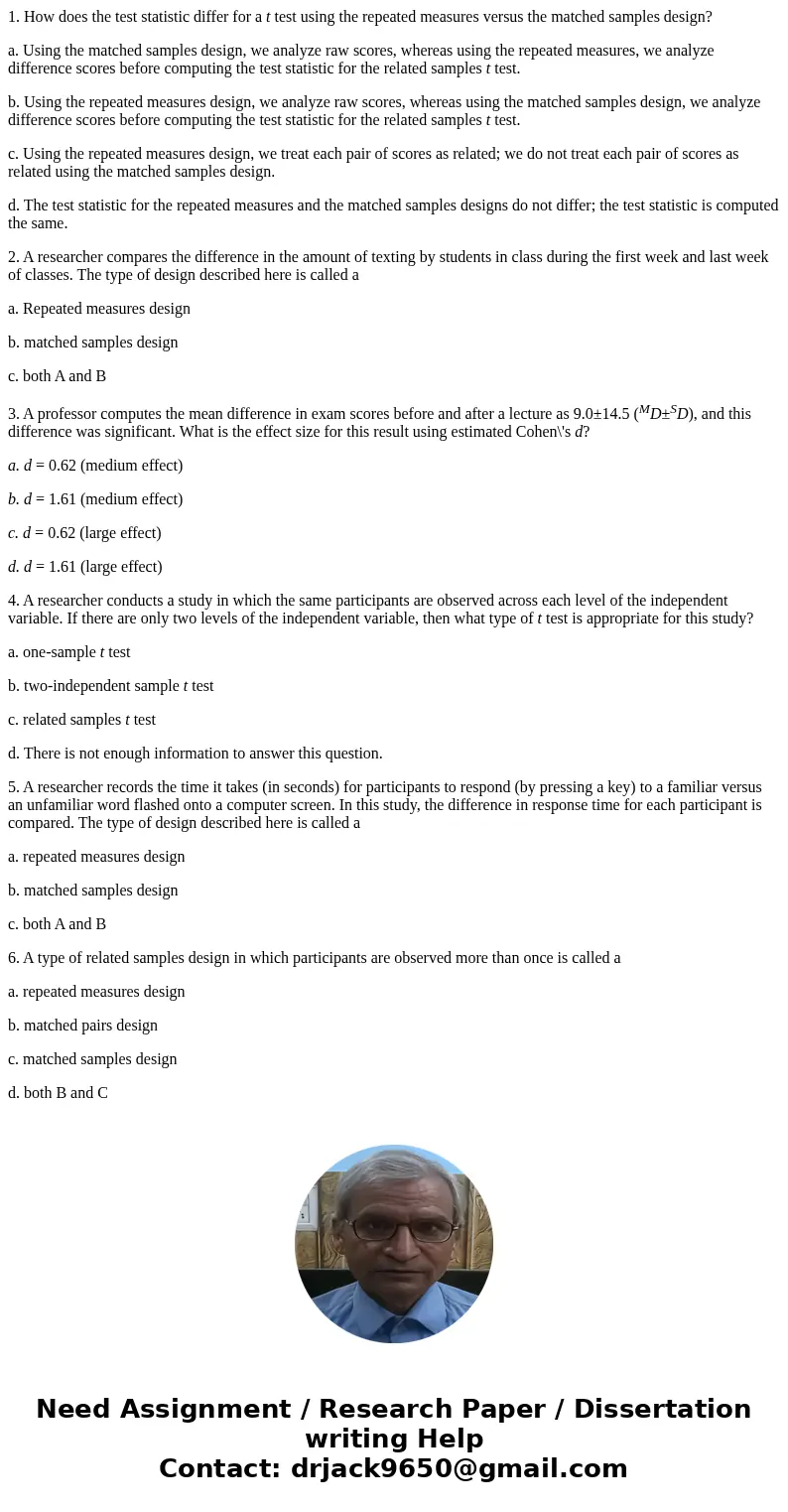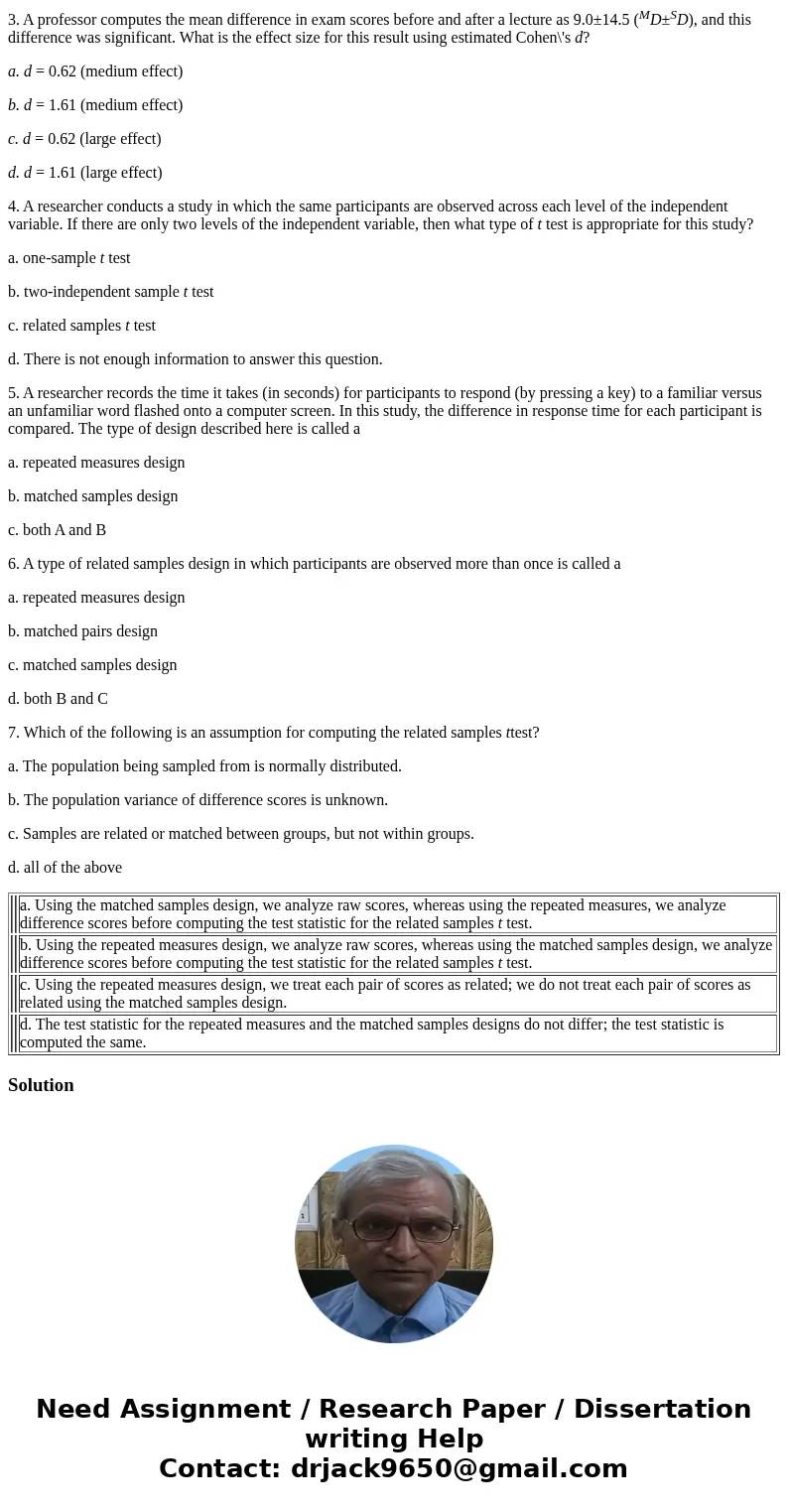1 How does the test statistic differ for a t test using the
1. How does the test statistic differ for a t test using the repeated measures versus the matched samples design?
a. Using the matched samples design, we analyze raw scores, whereas using the repeated measures, we analyze difference scores before computing the test statistic for the related samples t test.
b. Using the repeated measures design, we analyze raw scores, whereas using the matched samples design, we analyze difference scores before computing the test statistic for the related samples t test.
c. Using the repeated measures design, we treat each pair of scores as related; we do not treat each pair of scores as related using the matched samples design.
d. The test statistic for the repeated measures and the matched samples designs do not differ; the test statistic is computed the same.
2. A researcher compares the difference in the amount of texting by students in class during the first week and last week of classes. The type of design described here is called a
a. Repeated measures design
b. matched samples design
c. both A and B
3. A professor computes the mean difference in exam scores before and after a lecture as 9.0±14.5 (MD±SD), and this difference was significant. What is the effect size for this result using estimated Cohen\'s d?
a. d = 0.62 (medium effect)
b. d = 1.61 (medium effect)
c. d = 0.62 (large effect)
d. d = 1.61 (large effect)
4. A researcher conducts a study in which the same participants are observed across each level of the independent variable. If there are only two levels of the independent variable, then what type of t test is appropriate for this study?
a. one-sample t test
b. two-independent sample t test
c. related samples t test
d. There is not enough information to answer this question.
5. A researcher records the time it takes (in seconds) for participants to respond (by pressing a key) to a familiar versus an unfamiliar word flashed onto a computer screen. In this study, the difference in response time for each participant is compared. The type of design described here is called a
a. repeated measures design
b. matched samples design
c. both A and B
6. A type of related samples design in which participants are observed more than once is called a
a. repeated measures design
b. matched pairs design
c. matched samples design
d. both B and C
7. Which of the following is an assumption for computing the related samples ttest?
a. The population being sampled from is normally distributed.
b. The population variance of difference scores is unknown.
c. Samples are related or matched between groups, but not within groups.
d. all of the above
| a. Using the matched samples design, we analyze raw scores, whereas using the repeated measures, we analyze difference scores before computing the test statistic for the related samples t test. | ||
| b. Using the repeated measures design, we analyze raw scores, whereas using the matched samples design, we analyze difference scores before computing the test statistic for the related samples t test. | ||
| c. Using the repeated measures design, we treat each pair of scores as related; we do not treat each pair of scores as related using the matched samples design. | ||
| d. The test statistic for the repeated measures and the matched samples designs do not differ; the test statistic is computed the same. |
Solution


 Homework Sourse
Homework Sourse